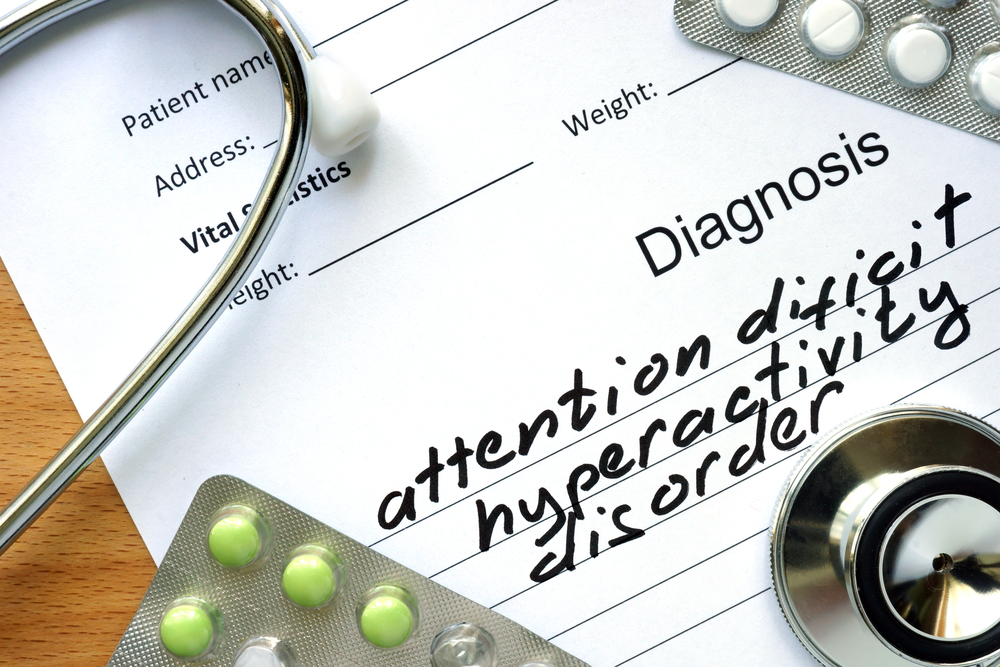Attention deficit hyperactivity disorder (ADHD), previously referred to as attention deficit disorder (ADD) is listed in the Diagnostic and Statistical Manual of Mental Disorders, Fifth Edition (DSM-5) and is characterized as “a persistent pattern of inattention and/ or hyperactivity-impulsivity that interferes with functioning or development.” The American Academy of Pediatrics further asserts, “Attention deficit hyperactivity disorder (ADHD) is a neurobiological condition whose symptoms are also dependent on the child’s environment.” Although ADHD is one of the most studied conditions in America, the precise cause for developing ADHD remains unknown. Research has, however, indicated that genetic factors, environmental factors, and developmental delays may all contribute to its potential development. ADHD is extremely common, as the worldwide prevalence of ADHD is estimated to be around 2.2% in children and 2.8% in adults. According to the Centers for Disease Control and Prevention (CDC), nearly 3.3 million children between ages 12-17 have been diagnosed with ADHD in America.
Inattentive Symptoms
There are several signs and symptoms that can present as symptoms of inattention in ADHD. The CDC indicates that the symptoms of inattention are inappropriate for one’s developmental level, and can include any combination of the following:
- Often fails to give close attention to details or makes careless mistakes in schoolwork, at work, or with other activities.
- Often has trouble holding attention on tasks or play activities.
- Often does not seem to listen when spoken to directly.
- Often does not follow through on instructions and fails to finish schoolwork, chores, or duties in the workplace (e.g., loses focus, side-tracked).
- Often has trouble organizing tasks and activities.
- Often avoids, dislikes, or is reluctant to do tasks that require mental effort over a long period of time (such as schoolwork or homework).
- Often loses things necessary for tasks and activities (e.g., school materials, pencils, books, tools, wallets, keys, paperwork, eyeglasses, mobile telephones).
- Is often easily distracted.
- Is often forgetful in daily activities.
As is outlined in the diagnostic criteria provided in the DSM-5, to be diagnosed with ADHD, a teen must show a persistent pattern of inattention and/ or hyperactivity-impulsivity that interferes with his or her functioning or development.
For Information and Support
Every family in need of mental health treatment must select a program that will best suit the needs of their family. When one member of a family struggles, it impacts everyone in the family unit. To maximize the benefits of treatment we work closely with the entire family to ensure that everyone is receiving the support they need through these difficult times. Seeking help is never easy, but you are not alone! If you or someone you know needs mental health treatment, we strongly encourage you to reach out for help as quickly as possible. It is not uncommon for many mental health difficulties to impact a person’s life, long term. Pursuing support at the beginning of one’s journey can put the individual in the best position to learn how to manage themselves in a healthy way so they can go on to live happy and fulfilling lives.
OUR KNOWLEDGEABLE ADMISSIONS TEAM CAN BE REACHED 24/7 AT INFO@PACIFICRTC.COM OR CALL: 800-531-5769 We are available to answer any questions you may have regarding mental health treatment and our residential program, anytime. Contact us today using the form to the right.






